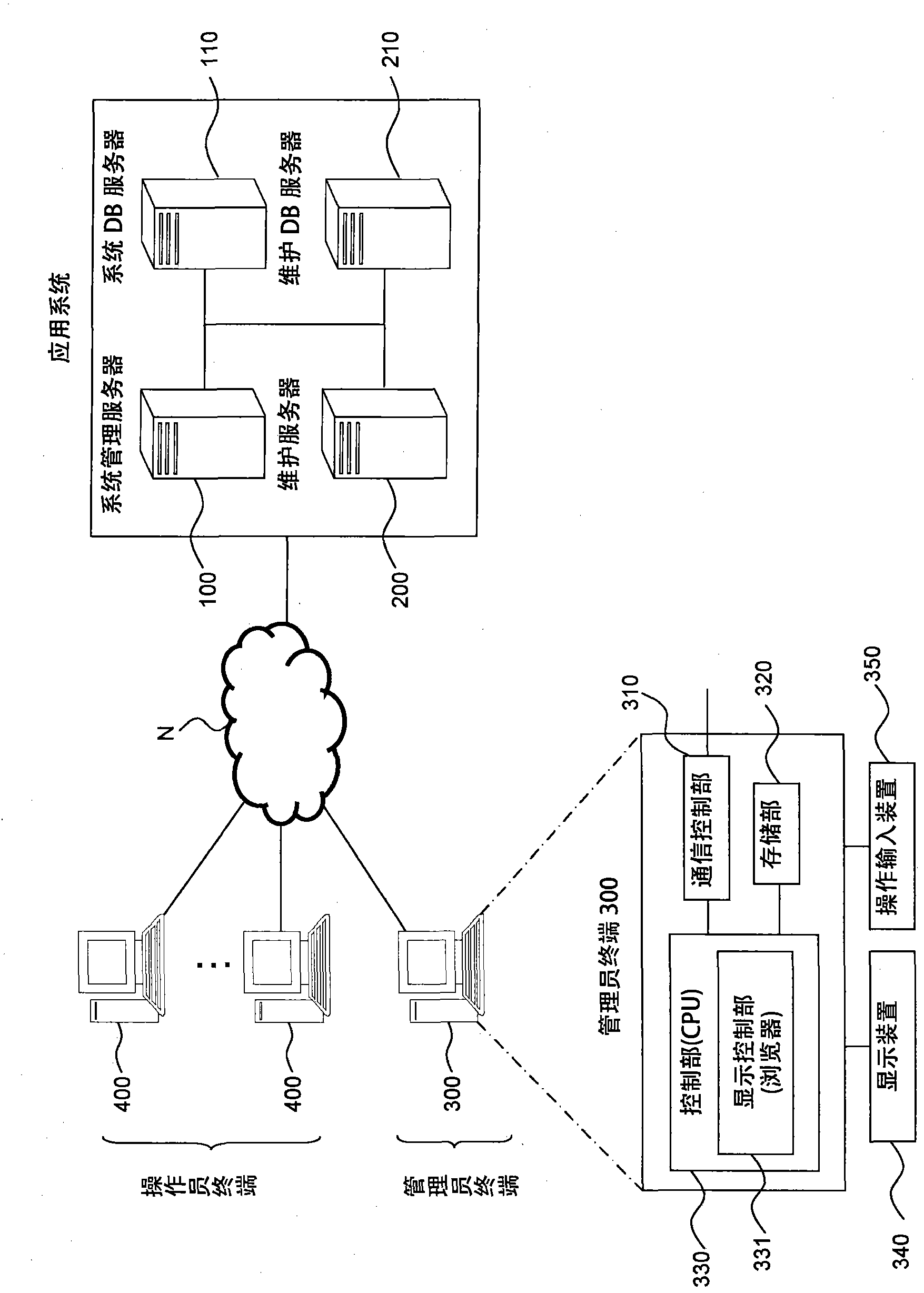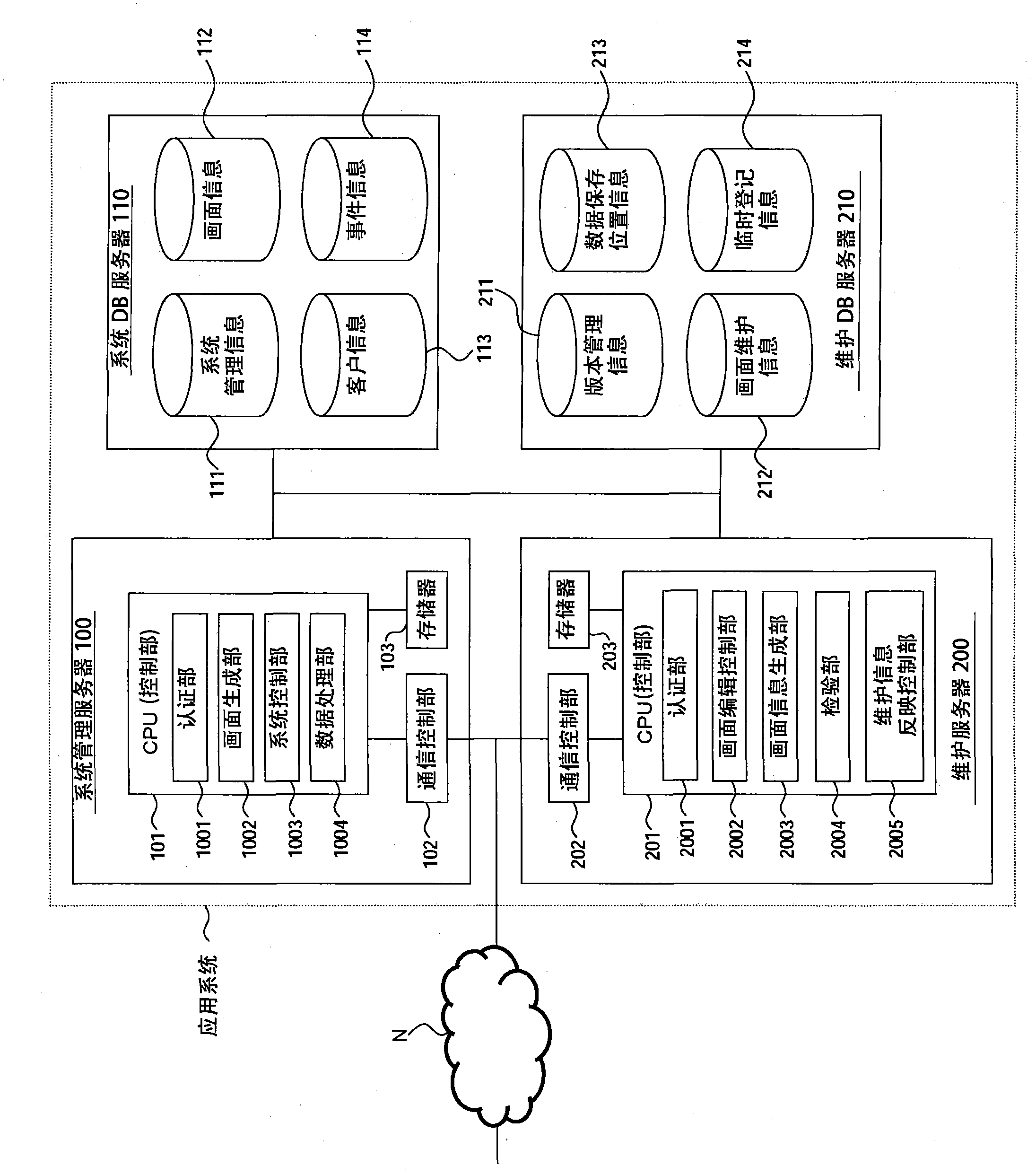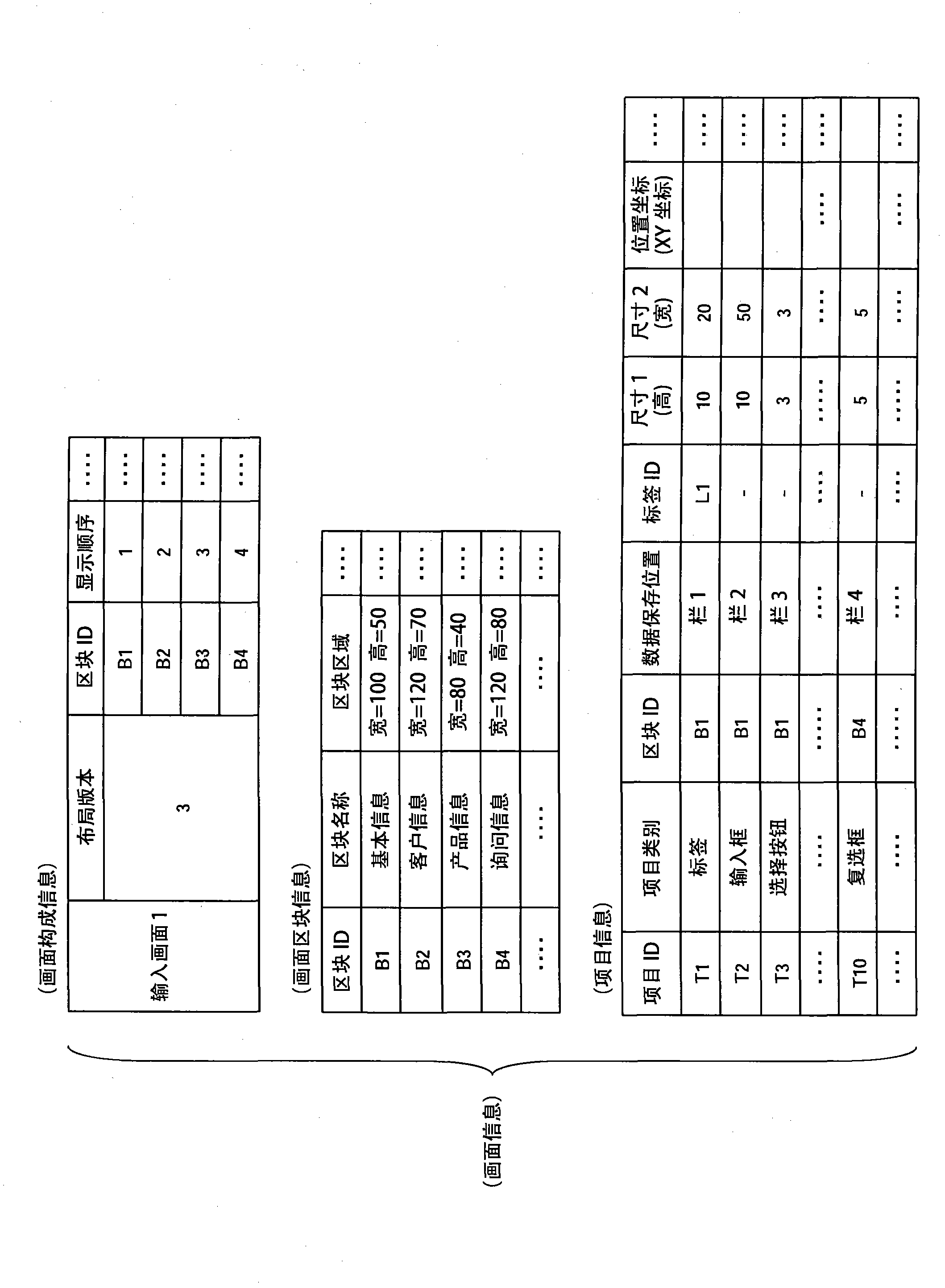Maintenance device and application system
A technology for application systems and maintenance devices, applied in the direction of program control devices, etc., can solve the problems of complicated maintenance and management, inability to easily operate screen maintenance, etc.
- Summary
- Abstract
- Description
- Claims
- Application Information
AI Technical Summary
Problems solved by technology
Method used
Image
Examples
no. 1 approach
[0075] Figure 1 to Figure 16 It is a figure of 1st Embodiment. figure 1 It is a structural block diagram of the application system in the first embodiment. like figure 1 As shown, the application system of this embodiment includes an application module (system management server 100, system DB server 110), and a maintenance module (maintenance server 200, maintenance DB server 210).
[0076] The application module controls (executes) all application functions. The system management server 100 provides one or more application functions based on operation screens to terminal devices (administrator terminal 300 , operator terminal 400 ) connected via a network N such as the Internet. The system DB server 110 stores information necessary for the system management server 100 to provide application functions, such as information provided to the connected terminal device by the system management server 100 and information input from the terminal device. The application functions ...
PUM
 Login to View More
Login to View More Abstract
Description
Claims
Application Information
 Login to View More
Login to View More - Generate Ideas
- Intellectual Property
- Life Sciences
- Materials
- Tech Scout
- Unparalleled Data Quality
- Higher Quality Content
- 60% Fewer Hallucinations
Browse by: Latest US Patents, China's latest patents, Technical Efficacy Thesaurus, Application Domain, Technology Topic, Popular Technical Reports.
© 2025 PatSnap. All rights reserved.Legal|Privacy policy|Modern Slavery Act Transparency Statement|Sitemap|About US| Contact US: help@patsnap.com



